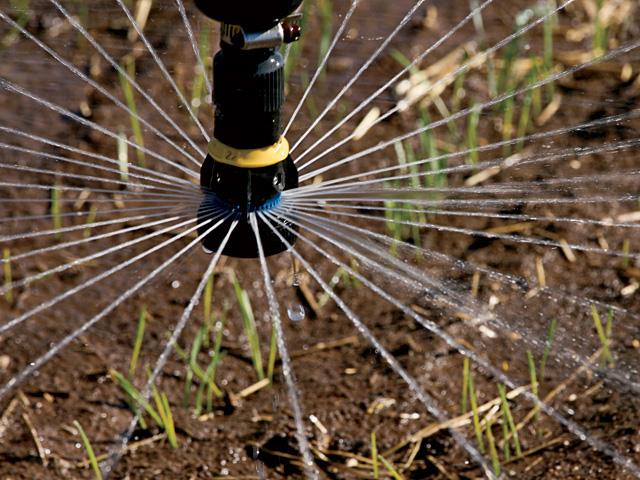Study: Groundwater Decline Accelerates
Journal Nature Study Finds Groundwater Declines Growing Around World
LINCOLN, Neb. (DTN) -- Groundwater depletion has accelerated in dry and extensive cropland regions around the world in the 21st century, according to a new study published in the journal Nature last week.
However, the study authors said the good news is that depletion can be reversed by putting the right management policies in place.
The Nature article, "Rapid groundwater decline and some cases of recovery in aquifers globally," outlines the results of a rare analysis of 170,000 monitoring wells and 1,693 aquifer systems in countries that make up 75% of global groundwater withdrawals.
"Critically, we also show that groundwater-level declines have accelerated over the past four decades in 30% of the world's regional aquifers," the study said.
"This widespread acceleration in groundwater-level deepening highlights an urgent need for more effective measures to address groundwater depletion. Our analysis also reveals specific cases in which depletion trends have reversed following policy changes, managed aquifer recharge and surface-water diversions, demonstrating the potential for depleted aquifer systems to recover."
The study found groundwater levels became deeper over time at rates exceeding 10% of one meter in 36% of the aquifer systems and exceeding 50% of one meter in 12% of them.
The rate of groundwater level increases of 10% were found in 6% of the aquifer systems and faster than 50% increases in only 1% of them.
"Some groundwater-shallowing trends may be explained by reductions in groundwater withdrawals, land-cover changes, managed aquifer recharge projects," the study said.
"To place 21st-century groundwater-level declines into context, we compared them with groundwater-level trends during the late 20th century (1980-2000); this analysis was possible in 542 of the 1,693 delineated aquifer systems. In 30% of these aquifer systems, groundwater-level declines accelerated, with early 21st-century groundwater-level declines outpacing those of the late 20th century.
"These cases of accelerating groundwater-level declines are more than twice as prevalent as one would expect from random fluctuations in the absence of any systematic trends in either time period."
P[L1] D[0x0] M[300x250] OOP[F] ADUNIT[] T[]
In addition, the study found the rate of groundwater level declines in the 21st century outpaced those in the late 20th century more often than expected.
To explore potential relationships between accelerating groundwater-level declines and climate variability, the study authors examined precipitation rates during the past 40 years.
They found that 80% of aquifers showing accelerated declines also saw lower average annual precipitation during the early 21st century than in the late 20th century.
The study said this indicated a "potential link" between climate variability and accelerating groundwater-level declines.
"Accelerating groundwater-level declines, regardless of their potential drivers, are likely to also accelerate the consequences of those declines, including land subsidence and wells running dry," the study said.
The study authors said despite accelerating groundwater declines there is some good news.
"Our analysis of groundwater levels suggests that long-term groundwater losses are neither universal nor inevitable," the study said.
In 49% of the 542 aquifer systems in the study, groundwater-level declines have decelerated or reversed, and 13% of them have seen groundwater levels rise. In 20% of the aquifer systems, the study found groundwater-level deepening had decelerated.
"Although these cases are outnumbered by those for which groundwater declines have accelerated, they demonstrate that it is possible to slow, and potentially even reverse, groundwater-level declines," the study said.
In 13% of the aquifer systems, groundwater levels rose in both the late 20th and the early 21st centuries, the study said.
"Some of these cases indicate that aquifers that were heavily exploited before 1980 are recovering," the study found.
"Aquifer recovery can potentially ameliorate the consequences of groundwater pumping. In other cases, however, rising groundwater levels can be problematic. For example, rising groundwaters can lead to flooding of coastal cities, waterlogging of farmlands and salinization of groundwaters and soils."
Irrigation is estimated to account for about 70% of global groundwater withdrawals -- meaning it's difficult to manage or mitigate groundwater losses from dryland aquifers.
"Aquifer recharge is typically slow in drylands, meaning that depleted dryland aquifers will generally take longer to recover than aquifers in wetter climates, except where recharge rates are artificially increasing," the study said.
"Moreover, groundwater is often the sole source of perennial drinking water for communities in drylands. As groundwater levels become deeper, shallower wells can run dry, compromising local water access. Even where groundwater levels remain stable, groundwater withdrawals can deplete the flow of nearby streams by reducing natural seepage of groundwater to rivers, or even inducing stream water leakage into underlying aquifers."
Read the journal Nature study here: https://www.nature.com/…
Todd Neeley can be reached at todd.neeley@dtn.com
Follow him on X, formerly known as Twitter, @DTNeeley
(c) Copyright 2024 DTN, LLC. All rights reserved.






